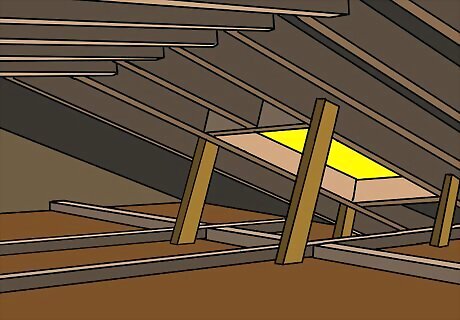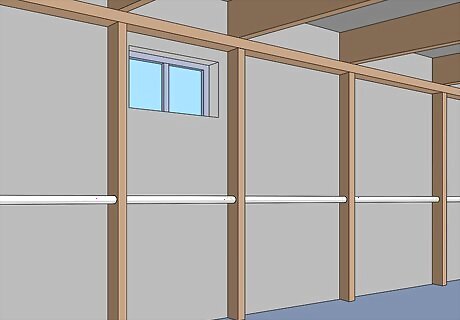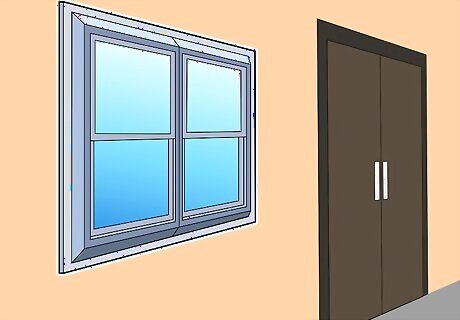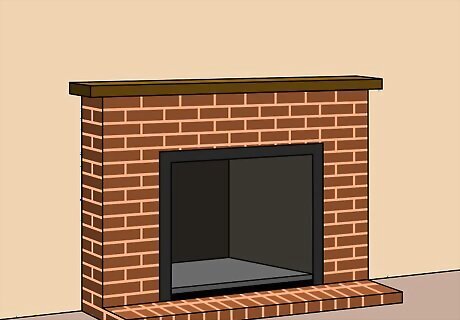
views

Inspect and seal the attic. Apply weather strip to the attic entrance door.Weatherize Your Home Step 1Bullet1.jpg Fit fiberglass insulation around electrical wires.Weatherize Your Home Step 1Bullet2.jpg Caulk around plumbing fixtures and vents where there is a gap. Water might be leaking from these pipes; make sure to check.Weatherize Your Home Step 1Bullet3.jpg Seal the attic floor from the rest of the house. If you have an older home, this might involve packing insulation over the majority of the floor. There is no need to heat your attic during the winter, and the attic is one of the biggest offenders of air leakage.Weatherize Your Home Step 1Bullet4.jpg

Secure the basement. Seal around heating ducts with caulking and cover it with insulation.Weatherize Your Home Step 2Bullet1.jpg Place insulation around plumbing to prevent freezing pipes.Weatherize Your Home Step 2Bullet2.jpg Focus on sealing basement windows with weather-stripping and caulk. The window frames in basements usually aren't as well kept as windows in other parts of the house.Weatherize Your Home Step 2Bullet3.jpg Use a foam sealant to fill in holes in the foundation wall.Weatherize Your Home Step 2Bullet4.jpg

Check all windows and doors for leakage. Inspect each door for cracks between the door and the wall. If you see light coming from the other side, the door needs to be weather-stripped.Weatherize Your Home Step 3Bullet1.jpg Install window film over windows that seem to be allowing cold air inside. Window film can be purchased at hardware and home improvement stores for little money. It is clear plastic that is sealed around the window using a hair dryer to shrink the plastic.Weatherize Your Home Step 3Bullet2.jpg Choose from a variety of weather stripping materials. Tension seals can be used on the tops and sides of doors as well as sliding windows. Felt can be fit into a doorjamb. Reinforced foam attaches easily to wooden windows. Tape can seal oddly shaped cracks. Rolled vinyl works on the bottom of doors.Weatherize Your Home Step 3Bullet3.jpg Make sure all windows and doors are in proper working order. Broken windows are much harder to seal.Weatherize Your Home Step 3Bullet4.jpg Weather-strip doors that lead to the outside, such as doors to the garage or patio.Weatherize Your Home Step 3Bullet5.jpg

Seal the fireplace. Close the damper when the fireplace is not in use. If the damper does not close tightly, you should have it professionally repaired.Weatherize Your Home Step 4Bullet1.jpg Stop the flue with a commercial fireplace plug if you do not plan on using the fireplace during the winter.Weatherize Your Home Step 4Bullet2.jpg

Prepare your home's exterior. Uninstall window air conditioners and plug the holes. Air tends to leak between the cracks of window air conditioning units.Weatherize Your Home Step 5Bullet1.jpg Confirm that your dryer vent is properly covered with a self-closing flap.Weatherize Your Home Step 5Bullet2.jpg Apply caulk from the outside on windows you already caulked inside.Weatherize Your Home Step 5Bullet3.jpg

Contact a professional to investigate possible energy-loss problems. This might include inadequate duct-work or improperly installed insulation.



















Comments
0 comment